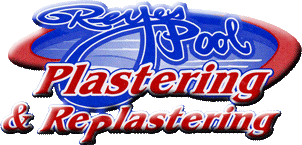Saltwater Chlorine Generation
The method in which chlorine is electrolytically generated from saltwater is relatively simple. Table salt (NaCl) mixed with water is passed over a low voltage electric current decomposing the salt compound by electrolysis into a chlorine ion (<1.1 pH) and a sodium hydroxide ion (pH 13 caustic soda). The combination of the 2 ions in water becomes sodium hypochlorite which reacts to produce hypochlorous acid. Hypochlorous acid (HOCl) is the primary compound responsible for pool disinfection.
THIS PROCESS PRODUCES A HIGH pH CHLORINE.
The higher the pH the less effective the chlorine becomes. Chlorine is pH sensitive. The pH should be maintained higher than 7.0 and lower than 7.6. A pH of 7.8 or greater drastically reduces (by 66%) the activity of the hypochlorous acid. It is recommended that a pH of 7.3 +/- 0.1 be maintained because of the pH of the eye fluids and bather comfort. High pH readings may be acceptable in colder climates but heat above 86° F (30° C), rain, sunlight, and heavy bathing loads require lower levels of pH to maintain an active HOCl. Allowing high uncontrolled pH causes scale.
CONTROLLING pH REQUIRES THE USE OF PRE-DILUTED HYDROCHLORIC OR MURIATIC ACID SOLUTION.
A small pre-diluted amount of acid added frequently is less traumatic than one large dose once a week or every other week. Pre-dilute a measured amount of acid in a 5-gallon bucket of pool water frequently (3 to 5 times per week) and carefully poor around the perimeter of the pool avoiding the skimmer to maintain a pH of 7.3. ALWAYS ADD ACID TO WATER NEVER WATER TO ACID.
THE ACID USED TO LOWER THE pH ALSO LOWERS THE ALKALINITY.
Low alkalinity will create aggressive water that is hard on the equipment as-well-as leach the calcium from the cementitious pool surface. It is necessary to adjust the alkalinity bi-monthly once again using a 5-gallon bucket of pool water in small pre-diluted doses. Alkalinity is a pH buffer. When maintained between 90 - 110 ppm (mg/l) alkalinity helps prevent a pH swing. Alkalinity related to balanced water should be maintained between 80 – 120 ppm (mg/l). The lower the alkalinity the more pH will drift by the addition of the acid. The lower 80 to 90 ppm seems to help prevent less scaling of the cell. Low alkalinity below 70 ppm may have deleterious effects on equipment and pool finishes. “Trust the Saturation Index”.
CALCIUM HARDNESS LEVELS SHOULD BE MAINTAINED AT 200 – Maximum 400 ppm (mg/l).
Low calcium hardness will leach calcium out of a cementitious surface. High calcium levels will precipitate out in warm water, high alkalinity, or high pH environments. Calcium is usually more stable than pH or alkalinity and should be checked at least once a month. Calcium at elevated levels around 400 ppm is hard to read accurately and should be diluted to prevent accidental scaling. Salt generators should not exceed 300 ppm calcium when possible.
CYANURIC ACID SHOULD BE MAINTAINED AT 25 – 50 ppm (mg/l)
Cyanuric acid protects the chlorine from the sun and helps produce a longer contact time to oxidize and disinfect. Higher levels slow down the hypochlorous ion and inhibit the chlorines ability to kill. The manufacturers’ of cyanuric acid (stabilizer) recommend a maximum of 60 ppm (mg/l). Research has shown that, high cyanuric acid levels above 100 ppm can cause deleterious effects on cement and metallic equipment.
THE LANGELIER SATURATION INDEX (LSI)
Part of the routine maintenance of maintaining pool water in a non aggressive – non scaling condition is to keep the water balanced to the Langelier Saturation Index. This index was developed by 5 Drs. from the University of California in the early 30’s and published in 1936. It has been used successfully around the world for over 70 years. It was originally developed to preserve municipal water systems and hot water boilers so +/-0.5 was acceptable. In the case of cosmetic pool surfaces it is recommended to tighten these margins to maintain a range between 0.0 - +0.3. When calculating the LSI the factor of -12.1 should be used for TDS levels up to 1000 ppm, -12.2 up to 2000 and -12.3 3000+ ppm.
Revised 081808
-0.5 Severe Corrosion Immediate treatment required
-0.3 Corrosive Treatment required
-0.2 Moderately Corrosive Treatment required
-0.1 Mild corrosion Treatment required
0.0 Balanced Monitor closely No treatment required
+0.1 Near balanced No treatment required
+0.2 Acceptable balance No treatment required
+0.3 Approaching scale condition Monitor closely No treatment required
+0.4 Mild scaling condition Treatment required
+0.5 Moderate scaling condition Treatment required
+0.6 Severe scaling condition Immediate treatment required
We strongly recommend to use a pool service company.
We strongly recommend to use a pool service company.
Reyes Pool Plastering & Replastering
Family owned Since 1990 - Licensed & Bonded State Lic. # 667184


